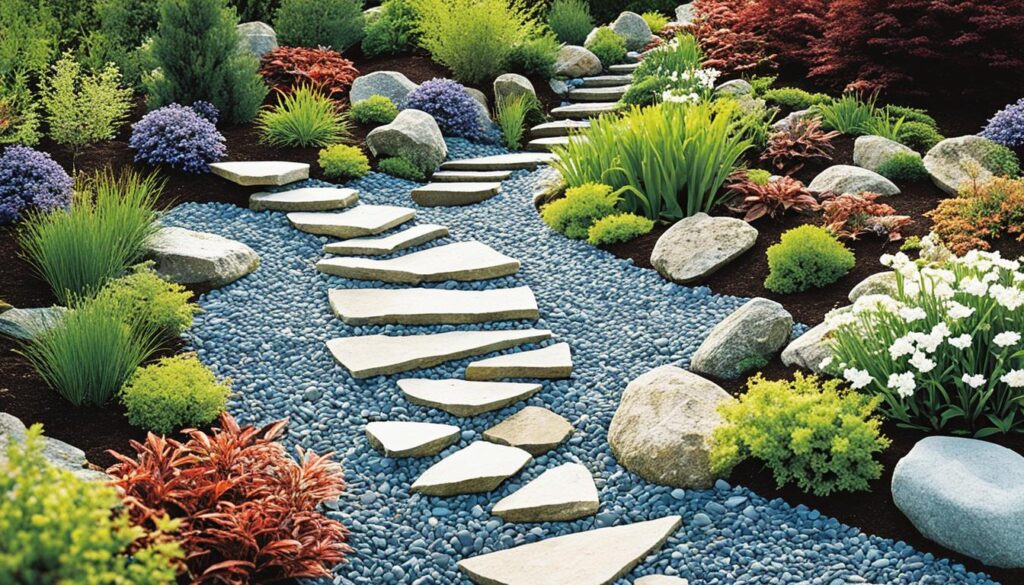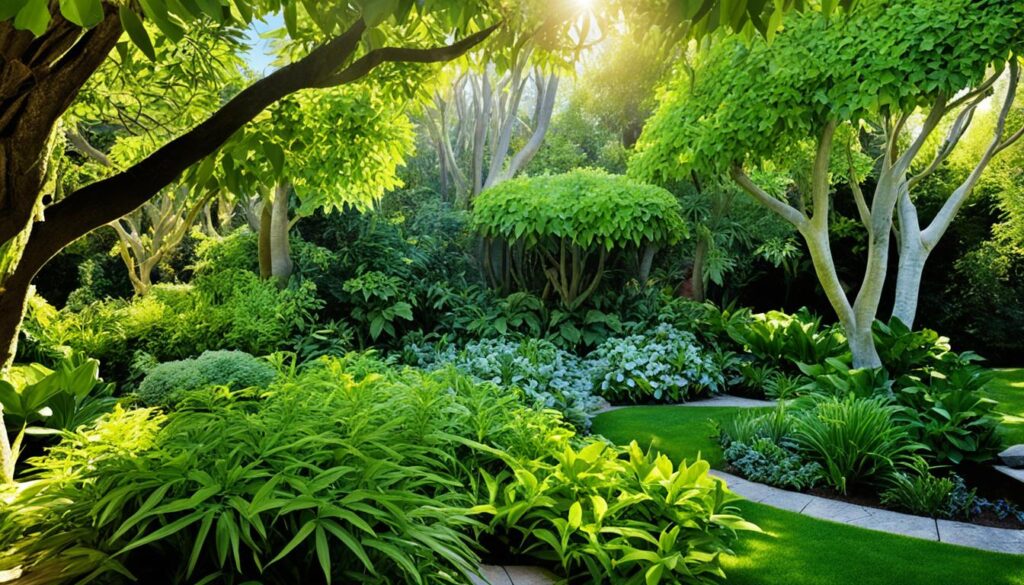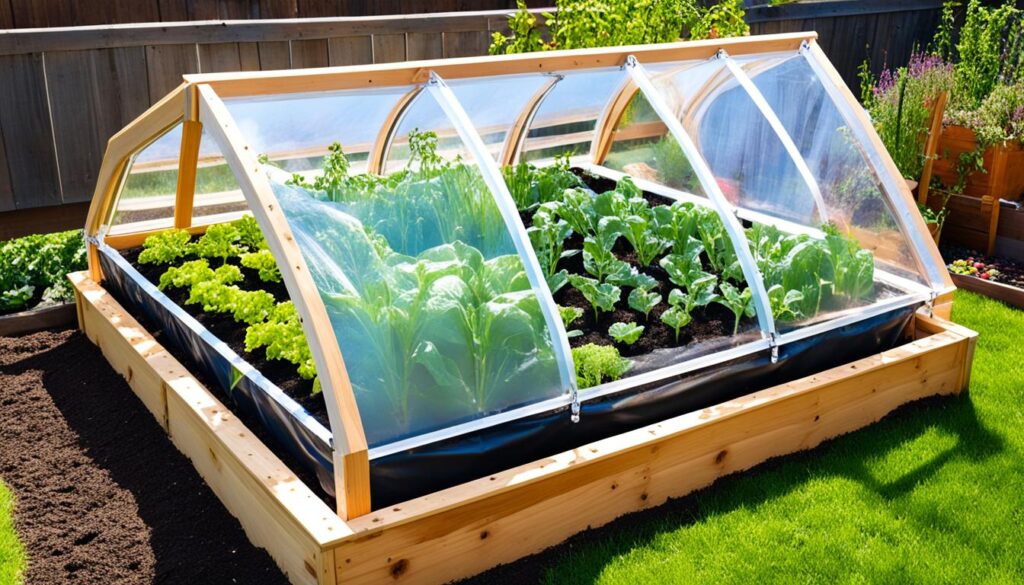A Zen garden, also known as a Japanese rock garden, is a unique and beautiful way to create a serene and peaceful space in your outdoor area. It is a carefully designed and arranged landscape that combines rocks, gravel, sand, and sometimes moss or plants to create a miniature representation of nature. Zen gardens have a long history and are deeply rooted in Japanese culture and spirituality. They’re structured around seven guiding principles: Austerity (Koko), simplicity (Kanso), naturalness (Shinzen), asymmetry (Fukinsei), mystery or subtlety (Yugen), magical or unconventional (Datsuzoku), and stillness (Seijaku). Zen gardens were originally developed by Japanese Buddhist monks as places of meditation in temples, but they’re now used in many private meditative backyard spaces or other work environments. Many homeowners are also opting for a mini Zen garden in their backyards.
Key Takeaways
- A Zen garden, also known as a Japanese rock garden, is a tranquil and peaceful outdoor space.
- Zen gardens are designed to evoke a sense of simplicity, balance, and harmony with nature.
- Having a Zen garden can promote relaxation, reduce anxiety, and provide a space for mindfulness and reflection.
- Maintaining a Zen garden involves regular raking, pruning, and cleaning to keep the space neat and serene.
- There are various styles of Zen gardens to choose from, such as dry landscape, courtyard, and pond styles.
What is a Zen Garden?
A Zen garden, often referred to as a “dry landscape” garden, is an ancient Japanese garden design that aims to create a tranquil and harmonious outdoor space. The essence of a Zen garden lies in its ability to evoke a sense of simplicity, mindfulness, and connection with nature.
In a Zen garden, careful attention is given to every element, from the arrangement of rocks to the use of raked gravel or sand. These elements work together to symbolize various natural features, such as mountains, islands, or flowing water. The minimalist design and intentional placement of these elements encourage a deep sense of calm and concentration, allowing you to disconnect from the distractions of daily life and find inner peace.
“In a Zen garden, simplicity is key. By embracing the principle of ‘less is more,’ we create a space where the mind can find stillness and the spirit can be rejuvenated.”
The Zen garden design is often characterized by its small size and enclosed nature, which create an intimate and secluded atmosphere conducive to quiet contemplation and meditation. By immersing yourself in the serenity of a Zen garden, you can create a sacred space where you can escape from the stresses of the outside world and cultivate a sense of tranquility and harmony.
Image: Zen Garden Design
Why Do You Need a Zen Garden?
Having a Zen garden in your outdoor space can bring numerous benefits to your physical, mental, and emotional well-being. In today’s fast-paced and hectic world, finding moments of peace and tranquillity is essential for our overall health and happiness.
A Zen garden provides you with a dedicated space to relax and unwind. The act of tending to your garden, raking the gravel or sand, and rearranging the rocks can be a meditative and therapeutic activity in itself. It allows you to focus your mind, relieve stress, and find inner balance.
“A Zen garden provides a peaceful outdoor space that allows you to disconnect from the world and find inner peace.”
The peaceful atmosphere of a Zen garden can also help to reduce anxiety and promote a sense of serenity. The carefully arranged rocks and gravel create a visually pleasing and harmonious landscape that can be enjoyed by both you and your guests. It adds a touch of elegance and sophistication to your garden, making it a peaceful sanctuary that blends seamlessly with nature.
A Tranquil Retreat
A Zen garden offers more than just aesthetic beauty; it provides a tranquil retreat where you can escape the stresses of daily life. Spending time in a Zen garden can help to clear your mind, improve focus, and promote a sense of calmness and well-being.
“A Zen garden helps create a sense of harmony and balance within yourself and your surroundings.”
Whether you use it for meditation, reflection, or simply to enjoy the serenity of nature, a Zen garden offers a peaceful outdoor space where you can find solitude and reconnect with yourself.
Take a moment to envision yourself surrounded by the beauty and tranquility of a Zen garden. The gentle rustling of leaves, the peaceful flow of water, and the soothing sight of carefully arranged rocks – all working together to create a harmonious oasis.
“A Zen garden allows you to create your own little haven of peace and serenity in the midst of a chaotic world.”
Whether you have a large backyard or a small balcony, there are Zen garden ideas that can be tailored to suit your space and preferences. From minimalist designs to lush and vibrant landscapes, the possibilities are endless.
“Discover the joy of creating a Zen garden that reflects your personal style and brings tranquility to your outdoor space.”
How to Use a Zen Garden
Using a Zen garden is a simple yet profound experience. When I enter my garden, I leave behind all my worries and distractions. I take a few deep breaths and allow myself to be fully present in the moment. As I step onto the soft gravel or sand, I feel the gentle texture beneath my feet. I close my eyes for a moment and listen to the rustling of leaves in the nearby trees. I let the tranquility of the garden wash over me, like a soothing balm for the soul.
I can start by gently raking the gravel or sand with a wooden rake. The act of raking is a form of meditation and helps to clear my mind and create a sense of calm. As I rake, I focus on the patterns I create and the sound of the rake against the surface. I allow my thoughts to drift away and find peace in the simplicity of the task.
“The gentle, rhythmic movements of the rake mirror the ebb and flow of life itself.”
Each stroke of the rake represents a moment of mindfulness, a moment of letting go. As I continue to rake, I notice how my breathing becomes slower and more rhythmic, syncing with the gentle movements of the rake.
I can also spend time rearranging the rocks and other elements in my Zen garden. I experiment with different arrangements and find a design that resonates with me. The process of arranging the rocks can be a metaphor for finding balance and harmony in my own life.
There is no right or wrong way to use a Zen garden. It is a personal and individual experience. I find what brings me joy and peace, and I allow myself to fully immerse in the present moment.
Using a Zen garden is a way to connect with nature and find inner peace. It is a reminder to slow down, be present, and appreciate the beauty of simplicity. Whether I choose to rake the gravel, rearrange the rocks, or simply sit and observe the peaceful surroundings, my Zen garden is a sanctuary where I can find calm and tranquility in the midst of a busy world.
Find Your Zen Garden Style
When creating a Zen garden, it’s essential to consider the style that resonates with you. The style you choose will reflect your personality and preferences while creating a tranquil and harmonious space. Let’s explore some popular Zen garden styles:
-
Karesansui (Dry Landscape Style)
Inspired by the natural landscape of mountains and islands, the Karesansui style features carefully arranged rocks and gravel as the main elements. These elements represent the ruggedness and fluidity of nature. Moss or shrubs can be added to create a sense of greenery and balance. This style is perfect for those who appreciate simplicity and minimalism.
-
Tsubo-en (Courtyard Style)
The Tsubo-en style is characterized by its small scale and enclosed space. It is often surrounded by walls or fences, providing privacy and creating an intimate atmosphere. Stepping stones, lanterns, and water basins are commonly incorporated into the design, adding visual interest and functionality. This style is ideal for individuals seeking a personal and contemplative space.
-
Chisen-shoyu (Pond Style)
The Chisen-shoyu style incorporates water features, such as ponds or small water basins, as the focal point. Surrounding the water, rocks, plants, and bridges are strategically placed to enhance the overall aesthetic and create a harmonious environment. The presence of water amplifies the feeling of tranquility and adds another layer of symbolism. This style suits those who desire a soothing and serene atmosphere.
Each Zen garden style offers a unique experience and allows you to express your creativity and individuality. Consider the characteristics and symbolism of each style to find the perfect Zen garden style that resonates with you.

How to Create a Zen Garden
Creating your Zen garden can be a fulfilling and rewarding experience. The process of designing and building your own tranquil oasis can bring a sense of peace and serenity to your outdoor space. Here are some steps to guide you in the process:
- Choose the Perfect Location: Select a quiet and secluded space in your outdoor area that receives adequate sunlight. This will allow you to fully immerse yourself in the calming atmosphere of your Zen garden.
- Plan the Layout: Consider the size and shape of your garden and sketch out a rough plan of how you want to arrange the rocks, gravel, and other elements. Keep in mind the principles of simplicity and balance to create a harmonious composition.
- Prepare the Ground: Clear the area from debris, level the ground, and create a base using sand or gravel. This will provide a stable foundation for the rocks and other elements.
- Select the Rocks: Choose rocks with appealing shape and texture that resonate with you. Arrange them in a way that creates balance and simplicity in your garden.
- Add Gravel or Sand: Add a layer of fine gravel, sand, or small pebbles to create a blank canvas. Use a rake to create patterns or lines, simulating the movement of water or energy flow.
- Add Additional Elements: Enhance the aesthetic appeal of your Zen garden by adding elements such as moss for a serene atmosphere, shrubs for greenery, or lanterns for soft and warm lighting in the evening.
- Other Elements to Consider: To create a secluded feel, enclose the area with a wall, fencing, or bamboo screening. This will enhance the peaceful atmosphere and provide privacy.
- Maintain Your Zen Garden: Regularly rake the gravel or sand to keep it neat and clean. Trim overgrown plants or moss to maintain balance and harmony. Appreciate and care for your Zen garden to continue enjoying its peace and serenity.
Creating a Zen garden landscaping is a meticulous process that requires attention to detail and adherence to the principles of Zen garden design. By following these steps, you can create a beautiful and tranquil space that brings inner peace and harmony to your outdoor area.
| Step | Description |
|---|---|
| 1 | Choose the Perfect Location |
| 2 | Plan the Layout |
| 3 | Prepare the Ground |
| 4 | Select the Rocks |
| 5 | Add Gravel or Sand |
| 6 | Add Additional Elements |
| 7 | Other Elements to Consider |
| 8 | Maintain Your Zen Garden |

Designing a Tranquil Oasis
Designing a Zen garden is an opportunity to create a tranquil oasis in your own outdoor space. It allows you to escape the noise and distractions of everyday life and find solace in the serenity of nature. Each step in the process, from selecting the location to maintaining the garden, contributes to the overall experience of peace and harmony. Remember to approach the design process with mindfulness and intention, embracing the principles of Zen garden design to create a space that reflects your inner calm.
Popular Elements of a Zen Garden
Zen gardens are carefully designed spaces that incorporate various elements to create a peaceful and harmonious atmosphere. These elements are thoughtfully chosen to evoke a sense of tranquility and connection with nature. Let’s explore some of the popular elements typically found in a Zen garden:
- Rocks: Rocks are fundamental to a Zen garden’s design. They symbolize mountains or islands and add structure and visual interest to the space. Each rock is carefully selected and positioned to create a dynamic composition that reflects the beauty of nature.
- Gravel or Sand: Gravel or sand is used to create patterns or ripples that represent water or energy flow. Raking the gravel or sand is a meditative practice that helps clear the mind and promote relaxation. It is an opportunity to engage in mindful contemplation while creating visually pleasing arrangements.
- Moss: Moss adds a touch of greenery and a natural, soft texture to the garden. It thrives in the moist and shaded areas of the garden, creating a serene and peaceful atmosphere. The lush green moss provides a sense of tranquility and adds an element of natural beauty.
- Lanterns: Lanterns are a traditional element of Japanese gardens and play a significant role in Zen garden design. They add a warm and inviting glow to the space, particularly during the evening hours. Placed strategically, lanterns highlight focal points or pathways, creating an enchanting ambiance.
- Water Features: While not traditionally included in Zen gardens, water features like small ponds or fountains can enhance the sense of tranquility. The gentle sound of flowing water soothes the mind and adds a soothing element to the garden, promoting a peaceful and serene environment.
- Bridges: Bridges are often used to connect different areas of the garden and create a sense of movement. They can be constructed from wood or stone and add an architectural element to the space. Bridges symbolize a transition from one area to another, inviting exploration and contemplation.
Each element in a Zen garden serves a purpose in promoting a calm and contemplative environment. With their harmonious arrangement, these elements encourage mindfulness and provide an opportunity for introspection and reflection.

Maintaining Your Zen Garden
To keep your Zen garden looking its best, regular maintenance is required. Here are some tips for maintaining your Zen garden:
-
Rake the Gravel or Sand
Regularly rake the gravel or sand to create clean lines and patterns. This not only helps to maintain the aesthetic appeal of the garden but also promotes a sense of calm and relaxation.
-
Prune and Trim
Trim any overgrown plants and remove dead or decaying leaves. This will keep the garden looking neat and well-maintained.
-
Weed Control
Remove any weeds that may appear in the gravel or planting areas. Weeds can disrupt the harmony of the garden and detract from its beauty.
-
Clean Any Water Features
If you have a water feature in your Zen garden, regularly clean and maintain it to prevent algae growth and keep the water clear and inviting.
-
Check for Damage
Regularly inspect the rocks, lanterns, and other elements of your Zen garden for any signs of damage or wear. Repair or replace as needed to ensure the garden remains in good condition.
By following these maintenance tips, you can enjoy a beautiful and peaceful Zen garden for years to come.
| Tasks | Frequency |
|---|---|
| Rake the gravel or sand | Weekly |
| Prune and trim plants | Monthly |
| Remove weeds | As needed |
| Clean water features | Biweekly |
| Inspect for damage | Quarterly |
Conclusion
Creating a Zen garden is a wonderful way to bring tranquility and serenity to your outdoor space. Whether you have a small corner in your backyard or a larger area to work with, you can design a Zen garden that suits your preferences and reflects your own personal style. By incorporating the principles of simplicity, balance, and naturalness, your Zen garden will become a peaceful oasis where you can relax, unwind, and find inner peace.
Take the time to carefully plan and design your Zen garden, and enjoy the process of creating a space that promotes mindfulness and reflection. Maintaining your garden regularly will ensure that it continues to look its best and that you can continue to find joy and serenity in this special outdoor sanctuary.








